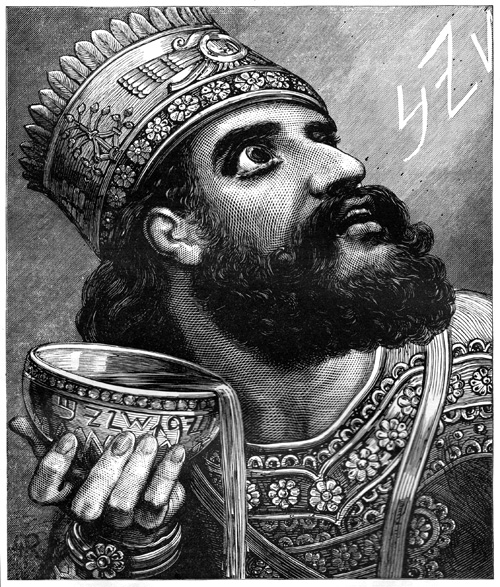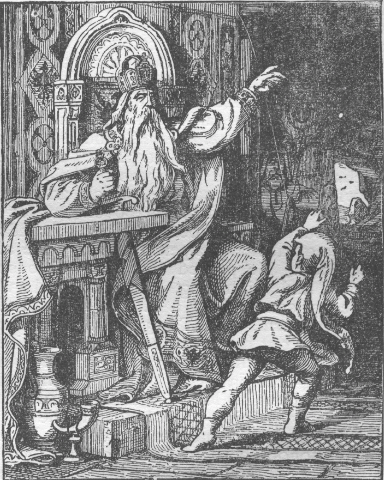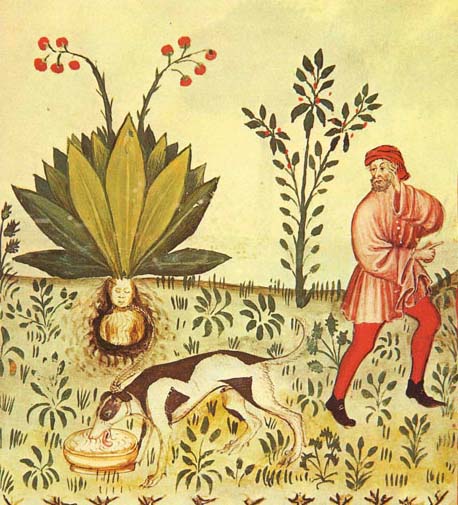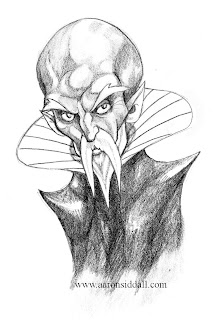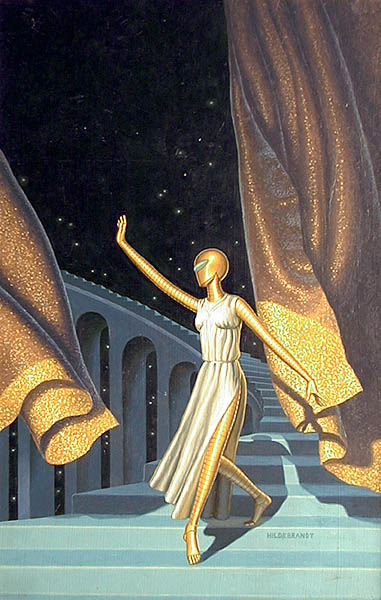 Common Marvels
Common MarvelsSuper-advanced gadgets are everyday sights in alot of regions of Strange Eons, albeit often out of the hands of most folks. Some worlds, like Dione, Tethys and Themis (to name a few) require at least some measure of artificial regulation of the environment, though this sort of thing is maintained by ancient robotic constructs.
Most folk who live near or in sight of these ancient devices dont even notice them anymore, and often have elaborate folklore about them when asked.
A Word About Relic Technology
It needs to be stressed that relic technology is potentially very dangerous. The technologies used by the Ancients was so arcane as to render it indistinguishable from magic in many cases. Because of this, and relic device that has been recently discovered has a chance of having some dreadful malfunction. This is handled the same as a Cursed Magic Item, and should be handled in the same way.
Relic Vehicles
Beyond the common animal-drawn vehicles (or just riding animals), there are purely mechanical vehicles to carry a person about. These range from small one-person vehicles to vast starships designed to carry great numbers. This does NOT include things like the many riverboats and sea-going vessels, which are handled differently.
All relic vehicles are of immense complexity, designed to do their job pretty much on their own. As-such all such machines are considered specialized robots, capable of at least a small amount of self-governance, though they are generally subservient to a "pilot" using the Ride skill to control.
I will post information concerning robots and robot vehicles in a future post.
Relic Weapons
Relic technology is quite advanced, with some devices and advancement far beyond human skill and knowledge (so far). Use of Relic Weapons requires the specific Exotic Weapon Proficiency (Antimatter Rifle, Laser Pistol etc); otherwise a –4 penalty is assessed against all attack rolls.
Antimatter Rife: A devastating short-range weapon that can be fired no more than once per round. Those slain by an antimatter rifle are completely destroyed, with no chance at resurrection. The imprisoned energy cell is drained after two shots. Reloading is a standard action. Large Rifle, Damage: 6d10, Crit: x2, Range Increment: 10ft, Type: Special, Market Price: 4,450gp.
Energy Cell: Used to supply charges for relic devices. Cost: 4gp each.
Laser Pistol: Laser pistols can be fired fifty times before the energy cell is drained and have a rate of fire equal to the users number of attacks. Reloading is a standard action. Small Pistol, Damage: 2d10, Crit: x2, Range Increment: 100ft, Type: Special, Market Price: 1,200gp.
Laser Rifle: Laser Riles can be fired fifty times before the encased energy cell is drained and have a rate of fire equal to the users number of attacks. Reloading is a standard action. Large Rifle, Damage: 3d10, Crit: x2, Range Increment: 200ft, Type: Special, Market Price: 2,550gp.
Flamer: The flamer can only be fired once per round and drains the energy cell after ten uses. Reloading is a standard action. The gout of flame deals damage in a 5ft wide stream extending to the maximum range.
Damage: 3d6, Crit: x2, Range Increment: 20ft, Type: Special, Market Price:14,000gp.
As with ranged weapons, these require a specific Exotic Weapon Proficiency (Sun Sword, Shiver Knife etc); otherwise a –4 penalty is assessed against all attack rolls.
Sun Sword (Whoosh-Hummmmm)
When inactive, a sun sword appears as an ornate weapon hilt. When activated, a hissing "blade" of energy issues from the hilt, to the length of a long sword blade. This energy blade is so destructive, that it completely ignored Hardness when used to damage objects also these wepons cannot be parried without another energy blade. These devices require a special self-recharging energy cell that costs 500gp (sold separately) that is completely drained after the sword has been activated ten times.
Medium Melee Weapon, Damage: 3d8, Crit: 19-20 x2, Type: Special, Market Price: 3,000gp,
The next Technology post will be about ROBOTS!
Below is a brief film of "kinetic sculptor" Theo Jansen. Perhaps some of the more subtle (or not so subtle) robotic beings of Strange Eons will have grown from the eerie designs of this brilliant man.

